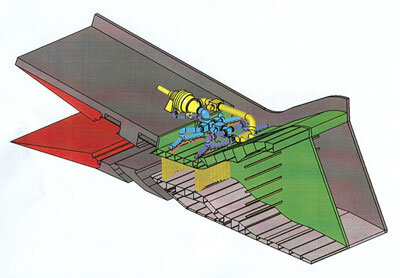Overview
Long-Term Advanced Propulsion Concepts and Technologies
To reduce the travelling time of long-distance flights, e.g. Brussels to Sydney, in about 2 to 4 hours, advanced propulsion concepts and technologies need to be developed. This requires a new flight regime with Mach numbers ranging from 4 to 8. At these high speeds, classical turbo-jet engines need to be replaced by advanced airbreathing engines.
Project Objectives
Two major directions at conceptual and technological level are considered: ram-compression and active compression. The latter has an upper Mach number limitation but can accelerate a vehicle up to its cruise speed. Ram-compression engines need an additional propulsion system to achieve their minimum working speed. Key objectives are the definition and evaluation of:

- different propulsion cycles and concepts for high-speed flight at Mach 4 to 8 in terms of turbine-based and rocket-based combined cycles
- critical technologies for integrated engine/aircraft performance, mass-efficient turbines and Heat exchangers, high-pressure & supersonic combustion experiments and modelling
Description of Work

A sound technological basis will be determined for long-term (20-25 years) to advance innovative propulsion concepts `The most critical RTD-building blocks will be identified employing dedicated analytical, numerical and experimental tools to address issues of the following road-map:

- two airbreathing engines for selected reference vehicle(s) and trajectory point(s)
- dedicated combustion experiments for supersonic and high-pressure combustion, including potential fuels and its interaction with flow-field turbulence
- modelling and validation of combustion physics on the basis of chemical kinetics and fuel spray vaporization models and turbulence affecting the combustion
- aerodynamic experiments for major engine components (intakes, nozzles, full engines), and establishment of data for interaction of vehicle and propulsion aerodynamics.
- evaluation and validation of advanced turbulence models to evaluate unsteady, separated flow regimes and to develop transition models based on intermittency related parameters
- performance prediction of contra-rotating turbines and light cryogenic fuel heat exchangers
Expected Results
The project duration is 36 months and will result in:

- definition of requirements and operational conditions for high-speed flight at system level
- dedicated experimental data-base specific to high-speed aerodynamics for supersonic and high-pressure combustion and flow phenomena.
- setting-up and validating physical models supported by numerical simulation tools to address supersonic and high-pressure combustion, turbulence and transition phenomena.
- feasibility study of weight performance turbine and heat exchanger components





